
We’ve all heard of fleas. These small blood-sucking insects can be a nuisance to you and your dog. Therefore, recognizing the signs early is crucial for effective treatment.
Understanding what symptoms show a dog has fleas will help you act quickly and ensure your pet’s comfort and well-being.
In this blog post, we’ll explore the hidden signs of flea infestations so you can learn how to identify fleas on dogs and take the necessary steps to protect your beloved companion. By staying informed, you can tackle flea problems early and keep your dog happy and healthy.
Table of Contents
How to tell if a dog has fleas
The telltale signs that indicate if your dog has fleas include:
- Scratching
- Bites / a rash
- Flea dirt (flea excrement) on skin and hair
- Bald spots (alopecia) or spiky fur
- Wounds and irritated (red) skin and/or scabs forming
- Your dog scratches and bites more than usual
- Dog turns suddenly or jumps to bite their back end
- Live fleas (not always easy to see)
- Allergy – some dogs may experience serious skin reaction to flea bites, resulting in severe itching and skin irritation
- Anaemia – it occurs when a large number of fleas feed on your dog’s blood. This can lead to severe blood loss, especially in ill, young, or old dogs
How do you check if a dog has fleas
To check your dog for fleas, you can use a flea comb or other fine-tooth comb and brush toward the backside of your pet and onto a wet paper towel. If small, dark pieces of flea dirt fall onto the paper and dissolve, turning reddish in colour, you can be certain that your dog has fleas.
When grooming your pet, make sure to check thinly haired areas, such as the abdomen, for any indications of fleas.
Learn What Kills Fleas in Carpet Naturally
What to do if my dog has fleas
After you have confirmed that your dog has fleas there’s no time to waste, as those pesky small insects can multiply in number relatively fast. To get rid of fleas quickly, follow these steps:
1. Bathe your dog
One of the first solutions to get rid of fleas on your dog is to bathe it. Use lukewarm water and add some soap, which can help get the fleas off your dog’s fur and skin. If you’re thinking about using specialised flea shampoo or something similar, make sure to talk to your veterinarian first, as such products contain chemicals that can irritate the dog’s skin.
2. Comb your dog
Dog fleas are tiny, fast, and difficult to grab, so one good way to remove them from your dog’s fur is to use a fine-tooth flea comb. Dipping the comb in a mixture of water and dish soap will help catch the insects, as it keeps them from jumping away.
Flea combs also help remove flea dirt and eggs from your pet. Any fleas caught in the comb should be disposed of in a container filled with hot water and dish detergent, which will quickly kill them.
3. Use specialised veterinary flea products
There are different types of topical products available – powders, sprays, tablets, injections, collars and spot-ons, the last of which is a newer, simpler and safer method. It involves applying a small vial of liquid to the back of your dog’s neck, which kills fleas and can even stop the development of eggs.
Ask your vet which type of product will be the safest and most effective to use in your situation.
4. Spray an apple cider vinegar solution onto your pet
Vinegar doesn’t kill fleas, but it can definitely help repel them. These little jumping insects don’t like the smell or taste of it, so if your dog’s fur is covered in it, they might avoid being there altogether. Just dilute some apple cider vinegar in water and add it to a spray bottle.
Some dogs hate being sprayed, so as an alternative, you can dip a brush in the mixture and get it onto their fur that way.
Check also: How to Get Rid of Fleas in My Garden Naturally?
How to prevent fleas on dogs
If not taken care of properly, fleas can be a recurring pest. Even if you kill all adults, there can still be eggs and pupae waiting to hatch at the right moment. Therefore, to prevent fleas on your dog, you can:
1. Keep your home clean
Regular vacuuming throughout the house, combined with high-temperature washing of bedding and fabrics, can help prevent fleas. Give your sofa a good hoovering, and pay special attention to all cracks and crevices.
Don’t forget to empty the vacuum cleaner bag outside after each hoovering! You need to keep in mind that wherever your dog has been for a longer period of time, there will likely be fleas. And yes, that can even mean your car.
2. Do regular checks and treatments
Regularly check your dog for fleas and apply preventative treatments as needed. This will help reduce the likelihood of your dog becoming infested, even if it comes into contact with animals that have fleas or walks through flea-infested areas.
3. Avoid contact with wild animals and infested areas
It’s best not to let your dog wander around areas where they’ve caught fleas before. You should also avoid letting them come into contact with wild animals, like badgers, hedgehogs, foxes, squirrels, rats and the like, which are more often than not chock-full of fleas. Most of these animals live in forests and parks and are more active at night.
4. Don’t let fleas infest your garden
Both wild animals and your dog can bring fleas into your yard, and your wonderful green area can become a breeding ground for these nasty insects. To ensure that your garden will be cleared of any unwelcome guests it’s best to enlist the help of trained fleas pest control specialists.
Professional exterminators have the knowledge and expertise to identify the source of fleas, remove them from your home, and prevent their return. They can also provide you with advice on how to protect your home from future flea infestations.
Stop the flea infestation in its tracks!
You don't have to be alone in the battle against pests. Hire a professional pest expert!
Call usHow harmful are fleas for dogs?
Despite their tiny size, fleas can pose significant health risks to your dog. A single flea can bite it hundreds of times a day, causing discomfort and irritation. Even a mild flea infestation can quickly lead to serious health issues, making flea prevention and treatment essential for your dog’s well-being.
Flea allergy dermatitis (FAD)
Some dogs are severely allergic to flea saliva and can experience extreme discomfort even from a single flea bite. Common FAD symptoms include excessive scratching, licking or biting around the tail, groin, or backside. As a result, scabs, bumps and bare spots can develop on the neck or back of the dog.
Flea-bite anaemia
Just like humans, dogs rely on having a certain number of red blood cells in their bodies to keep them healthy and energetic. Too many fleas feeding on your dog can make it anaemic from the blood loss.
Any dog can develop flea-bite anaemia, but some are more susceptible – smaller dogs, puppies, the elderly and sick dogs. Severe cases of anaemia can even be fatal. If your dog shows symptoms of lethargy, weakness or pale gums, you must take it to the vet immediately.
Tapeworms
If your dog ingests fleas containing tapeworm eggs, it can become infected with this parasite. Inside your dog’s digestive tract, the tapeworm egg matures into an adult tapeworm that can grow several feet long.
The tapeworm hooks onto the lining of your dog’s small intestine and absorbs nutrients as they pass through its digestive tract. This can cause nutritional deficiency, weight loss and debilitation for your dog.
Check also:
Takeaways
- Fleas are a persistent pest in the UK, commonly affecting dogs and their owners. Dogs can pick up fleas from other animals or infested environments, making prevention and prompt action crucial to their well-being.
- An obvious sign of fleas on dogs is spotting the fleas themselves or noticing flea dirt—tiny black specks that resemble ground pepper. Other indicators may include excessive scratching, biting, or licking of the skin, which can lead to irritation or even hair loss.
- Preventing dog fleas begins with avoiding infested areas, keeping your dog away from wild animals, and maintaining a clean home and garden environment. Regular cleaning of your dog’s bedding and vacuuming carpets can reduce the risk of infestation.
- Even a mild flea infestation can be harmful to your dog, potentially leading to conditions such as anaemia or tapeworms. By recognising the signs of fleas and taking preventative measures, you can ensure your dog stays happy and healthy.
***
Did you find this useful? Do you have anything you’d like to add? Tell us in the comments below!

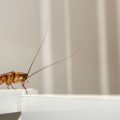



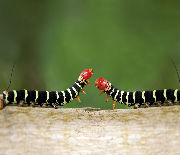
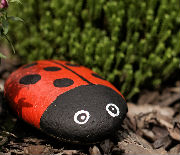
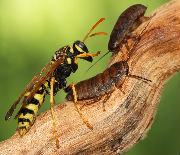
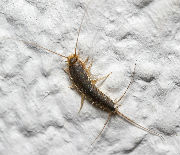
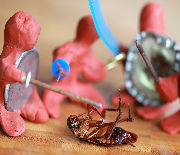
Leave a Reply